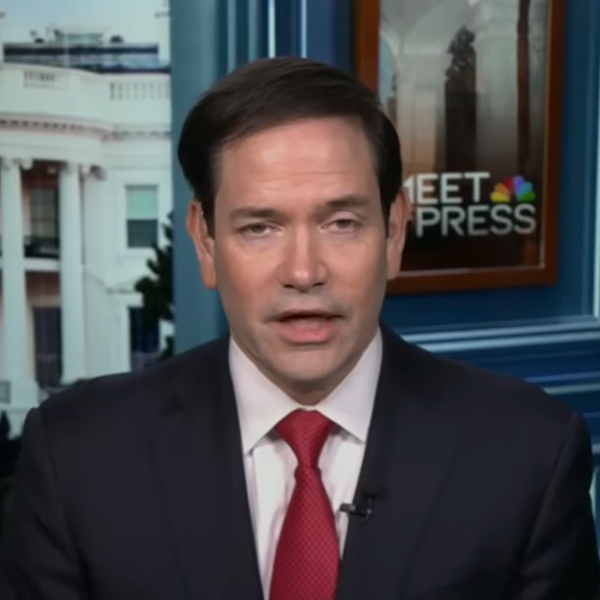President Biden is in the process of releasing the broad outlines of his first budget proposal, a move that will kick off months of fierce debate among lawmakers and talking heads in Washington over the funding levels for the federal government. As the President reportedly looks to propose a major boost in non-defense discretionary spending for the upcoming 2022 fiscal year, policymakers should be wary of defense hawks who are already calling for dollar-for-dollar increases in the defense budget to match President Biden’s proposed spending increases.
Bloomberg reported on this dynamic recently, writing that the most powerful appropriator in the Republican Party — Senate Appropriations Committee Ranking Member Richard Shelby (R-Ala.) — is calling “for equal treatment (of defense outlays) with non-defense outlays if Biden moves to boost those.”
This principle went by another name — “parity” — during the Budget Control Act (BCA) era of 2012-2021. The law, forged through bipartisan compromise by President Obama and Congressional Republicans, was supposed to introduce a modicum of budget discipline after a group of lawmakers failed to reach a deal on deficit reduction in 2011. To spread the pain evenly among Republican and Democratic spending priorities, the BCA established separate, decade-long spending caps on defense and non-defense parts of the budget, building on decades of Congressional distinction between these two types of discretionary spending.
Also called “security” and “non-security” spending, the former typically consists of the Departments of Defense, Homeland Security, and Veterans Affairs, as well as the National Nuclear Security Administration within the Department of Energy, the intelligence community, and international affairs spending. The Department of Defense, or DoD, comprises the vast majority of the security part of the budget.
In theory, “parity” in the BCA was supposed to motivate both Republicans and Democrats to reach a deal on deficit reduction before automatic spending caps kicked in. Republicans would not want to see defense spending reduced, the theory went, and Democrats would blanch at cuts to domestic priorities like government support for education, health care, and housing.
In practice, “parity” led to around $1.7 trillion in new spending over the BCA’s 10-year window, which is closing in a few months. A majority of these cap violations over the decade occurred on the “defense” side of the ledger, with hundreds of billions of dollars devoted to the Overseas Contingency Operations (OCO) slush fund — outside the budget caps — and with Republicans insisting on defense spending caps that rose in “parity” with non-defense spending caps that Democrats regularly asked to raise (and vice versa).
A central irony of the BCA era was that the initial mission for Congress was to find $1.5 trillion in deficit reduction over 10 years, and instead they found nearly $1.7 trillion in new spending above BCA levels. Again, much of this glut got stuffed into the Pentagon budget, despite dubious claims that President Obama “depleted” or “gutted” the military during his time in office.
As we look to FY 2022, which begins October 1 of this year, many Republicans and some Democrats are talking about deficit reduction again. It’s a welcome change. Some policymakers inside and outside the government are starting to believe that, although federal support through the COVID-19 crisis was necessary, Congress has appropriated far too many deficit-financed dollars in the past year. New spending, on top of the nation’s $28 trillion in existing debt, could put the U.S. on a path to fiscal ruin in the near future.
This is why it’s ironic that some lawmakers and think tank experts who are asking for budget discipline, and criticizing the Biden administration’s spending plans, are nonetheless calling for 3 to 5 percent annual increases in the DoD budget — or parity, if you’re Senator Shelby.
Even though the defense budget is chock full of tens of billions of dollars of waste, slush, and failing legacy programs (more on that below), some lawmakers are arguing we should keep all of the fat in the Pentagon budget and add tens of billions of dollars more per year.
Taxpayers should be skeptical of calls to increase the DoD budget — or even to keep it flat, as the Biden administration proposes doing — just as they should be skeptical of the Biden administration’s plans to increase non-defense spending. Sadly, what parity means in modern-day Washington is often not dollar-for-dollar sacrifices from Democrats and Republicans in an era of high spending and high debt, but dollar-for-dollar increases in deficit-financed spending that our children, grandchildren, and great-grandchildren will pay for.
At my organization, National Taxpayers Union, we have a blueprint for Congress and the administration to achieve $3.6 trillion in deficit reduction over the next 10 years. Recognizing that none of those reductions will be easy and that both parties need to sacrifice spending priorities to achieve such gains, our proposal includes more than $1.2 trillion in savings from reductions to the Pentagon budget. This includes:
• Eliminating the OCO slush fund and resisting the temptation to fill the DoD base budget with whatever was in last year’s OCO account (around $800 billion in 10-year savings);
• Freezing DoD spending on operations and maintenance for five years, and then limiting growth to the rate of inflation ($195 billion in 10-year savings);
• Reducing funding for naval ship construction to its 30-year historical average ($49.7 billion); and more.
We released a more DoD-focused blueprint in February that honed in on $338 billion in four-year savings President Biden can achieve during his first term in office. The cuts include some favored programs for members in both parties, such as:
• Reducing the size of the nuclear triad ($3.7 billion in four-year savings);
• Canceling plans to purchase additional F-35 Joint Strike Fighter aircraft ($7.8 billion in four-year savings);
• Canceling the Ground-Based Midcourse Defense (GMD) system ($7.8 billion in four-year savings); and much more.
Some defense hawks blasted these suggestions, underscoring the difficult path lawmakers will face in achieving even modest reductions in the DoD budget. President Biden is proposing a flat Pentagon budget for FY 2022 — hardly a gutting decision for a $700-billion agency — and some of his Republican opponents are already claiming he is soft on China as a result. One thing the hawks regularly fail to do is explain how increases in the DoD topline make us safer, besides continuing to foster the illusion that more Pentagon spending means more security for the American people.
President Biden can do the responsible thing for taxpayers present and future by resisting the calls for a 3 to 5 percent boost in the Pentagon budget, and for “dollar-for-dollar parity” between defense and non-defense increases to the discretionary budget. He can go a step further by actually proposing meaningful cuts to the Pentagon budget, like those outlined above. And he can go even further by proposing some responsible spending cuts on both sides of the ledger, shunning the newly popular notion that extreme deficits are okay for the country. For now, though, we have rising talk of “parity” on Capitol Hill. Taxpayers should beware, for choppy waters lie ahead.
















